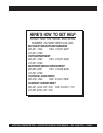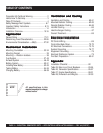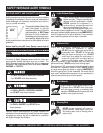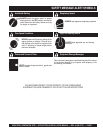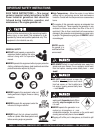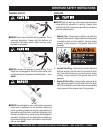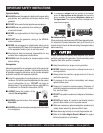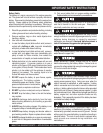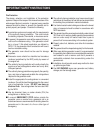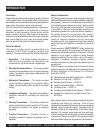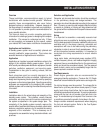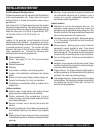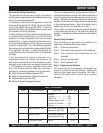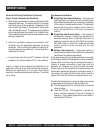
INDUSTRIAL GENERATOR SETS — APPLICATION & INSTALLATION MANUAL — REV. #4 (09/07/07) — PAGE 11
Battery Safety
The battery is a major component of the engine-generator
set. The genset will not start without a properly maintained
battery. Disconnecting the battery prevents the engine from
starting. Always observe the following safety guidelines
when interaction with the battery is necessary. Servicing of
batteries should be performed by authorized personnel only.
1. Wear full eye protection and protective clothing, including
rubber gloves and boots when handling a battery.
2. Remove watches, rings or other metal objects when
handling a battery.
3. Use tools with insulated handles.
4. In case the battery liquid (dilute sulfuric acid) comes in
contact with
clothing or skin
, rinse skin immediately
with plenty of water and discard clothing.
5. In case the battery liquid (dilute sulfuric acid) comes in
contact with your eyes, rinse eyes immediately with
plenty of water for fifteen minutes, then contact the
nearest doctor or hospital, and seek medical attention.
6. Spilled electrolyte is to be washed down with an acid
neutralizing agent. A common practice is to use a
solution of one pound (500 grams) bicarbonate of soda
to one gallon (4 liters) of water. The bicarbonate of soda
solution is to be added until the evidence of reaction
(foaming) has ceased. The resulting liquid is to be
flushed with water and the area dried.
7. DO NOT expose the battery to open flames, sparks,
cigarettes etc. The battery contains
combustible gases and liquids. If these
gases and liquids come in contact with a
flame or spark, an explosion could occur.
8. DO NOT lay tools or metal parts on top of batteries.
IMPORTANT SAFETY INSTRUCTIONS
Make certain the battery is well-ventilated before servicing.
Arcing can ignite explosive hydrogen gas given off by batteries,
causing severe personal injury. Arcing can occur when the
cable is removed or reattached, or when negative (-) battery
cable is connected and a tool used to connect or disconnect
positive (+) battery cable touches the frame or other grounded
metal that is part of the set. Always remove negative (-) cable
first, and reconnect it last. Make certain hydrogen gas from the
battery, engine fuel, and other explosive fumes are fully
dissipated. This is especially important if the battery has been
connected to a battery charger.
If using a serviceable battery, never over fill the battery with
water above the upper limit.
Always disconnect a battery charger from its AC source
before disconnecting the battery cables. Failure to do so
can result in voltage spikes high enough to damage the genset
DC control circuits and charger.
The battery contains electrolyte which is a dilute sulfuric
acid that is harmful to the skin and eyes. Electrolyte is
electrically conductive and very corrosive.
9. DO NOT drop the battery; there is the risk the battery
may explode.
10. ALWAYS discharge static electricity from the body
before touching batteries by first touching a grounded
metal surface.
11. ALWAYS keep the battery charged. If the battery is not
charged a buildup of combustible gas will occur.
12. ALWAYS keep battery charging and booster cables in
good working condition. Repair or replace all worn cables.
13. ALWAYS recharge the battery in an open air environment,
to avoid risk of a dangerous concentration of combustible
gases.
The installation of the engine-generator set must provide
enough ventilation to ensure that gases generated by vented
batteries during charging, or caused by equipment
malfunction are removed.
Lead-acid batteries present a
risk of fire because they generate hydrogen gas.
14. Only use a battery that is in proper working condition.
Replace battery as recommended by manufacturer.
On generators not having a grounded supply circuit,
determine if the battery is inadvertently grounded. When
inadvertently grounded, remove source of ground. Contact
with any part of a grounded battery is capable of resulting in
electrical shock. The risk of such shock is reduced when
such grounds are removed during installation and
maintenance.



